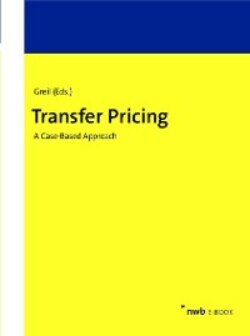Читать книгу Transfer Pricing - Sebastian Schulz - Страница 13
На сайте Литреса книга снята с продажи.
1.2.4 OECD Transfer Pricing Guidelines
ОглавлениеNeither Article 9 (1) OECD-MTC nor the UN-Model contains a concrete definition of the ALP. It would be almost impossible for an MNE group to make an accurate allocation of profits to each entity in the group without incurring economic double taxation if each state had established different profit allocation rules or a different understanding of the ALP.
Accordingly, the OECD, for example, has been endeavouring for years to ensure a uniform interpretation of the ALP. In 1979, the OECD issued a report Transfer Pricing and Multinational Enterprises, which contained methods that were acceptable for determining transfer prices. This report was influenced by the United States of America, the first country which prepared precise regulations for certain types of intra-group transactions in 1968. It was also the United States which had a great influence in the discussion in the OECD (and maybe still has). The 1979 report was included in a recommendation of the OECD Council of Ministers to the Governments of the Member Countries but was not legally binding. In the following years, the report was continuously amended and updated. In the current version as of 2017, the TPG contain nine chapters. In 2020, another chapter has been released, thus a total of ten chapters now provide guidance an intend primarily to „govern the resolution of transfer pricing cases in mutual agreement proceedings between OECD member countries and, where appropriate, arbitration proceedings” (Preface, para 17 TPG). The TPG comprises more than approximately 700 pages, including appendix, which attempt to determine the application of the ALP. They are intended to help both taxpayers and tax administrations to find satisfactory solutions to transfer pricing issues.
In particular, Chapter I of the TPG discusses the ALP as the basic standard for the determination of transfer prices. In this context, transfer pricing methods have been developed to take account of the application of the ALP. However, difficulties can arise while applying the ALP to intra-group transactions. Thus, „transfer pricing is not an exact science” (para. 1.13 TPG) and the one transfer price does not exist.
The UN-Manual can also be of importance in cases involving developing countries. This UN-Manual is intended in particular to take into account the needs of developing countries when applying the ALP. The application should be consistent with the OECD Transfer Pricing Guidelines. However, Brazil, China, Mexico, India and South Africa present their views on their interpretation of the ALP4), which show differences in the application of this principle compared to the application of the OECD countries.
The TPG are designed in particular to determine the decisions of the competent authorities in (advance) mutual agreement and arbitration procedures between OECD member states. Thus, the TPG are perhaps the most relevant document for the interpretation of an article of the OECD-MTC. In general, they are – at least from a German point of view – not directly legally binding for both the taxpayer and the tax administration. The TPG were approved by the Committee on Fiscal Affairs on 27 June 1995 and are the object of the recommendation of the OECD Council C(95)126/Final dated 13 July 1995. The recommendation is based on Art 5(b) of the Convention on the OECD.
Since 1992, Article 9 (1) OECD Commentary refers to the TPG and stating: „That report represents internationally agreed principles and provides guidelines for the application of the arm’s length principle of which the Article is the authoritative statement.” It can be concluded that, although the TPG are not legally binding to follow their guidance when interpreting a DTA is recommended. However, several countries refer to the TPG in their domestic legislation. In order to ensure to what extent a country follows the rules of the TPG one has to check the relevant domestic legislation.5)
Tab. 7: Role of TPG under domestic legislation
